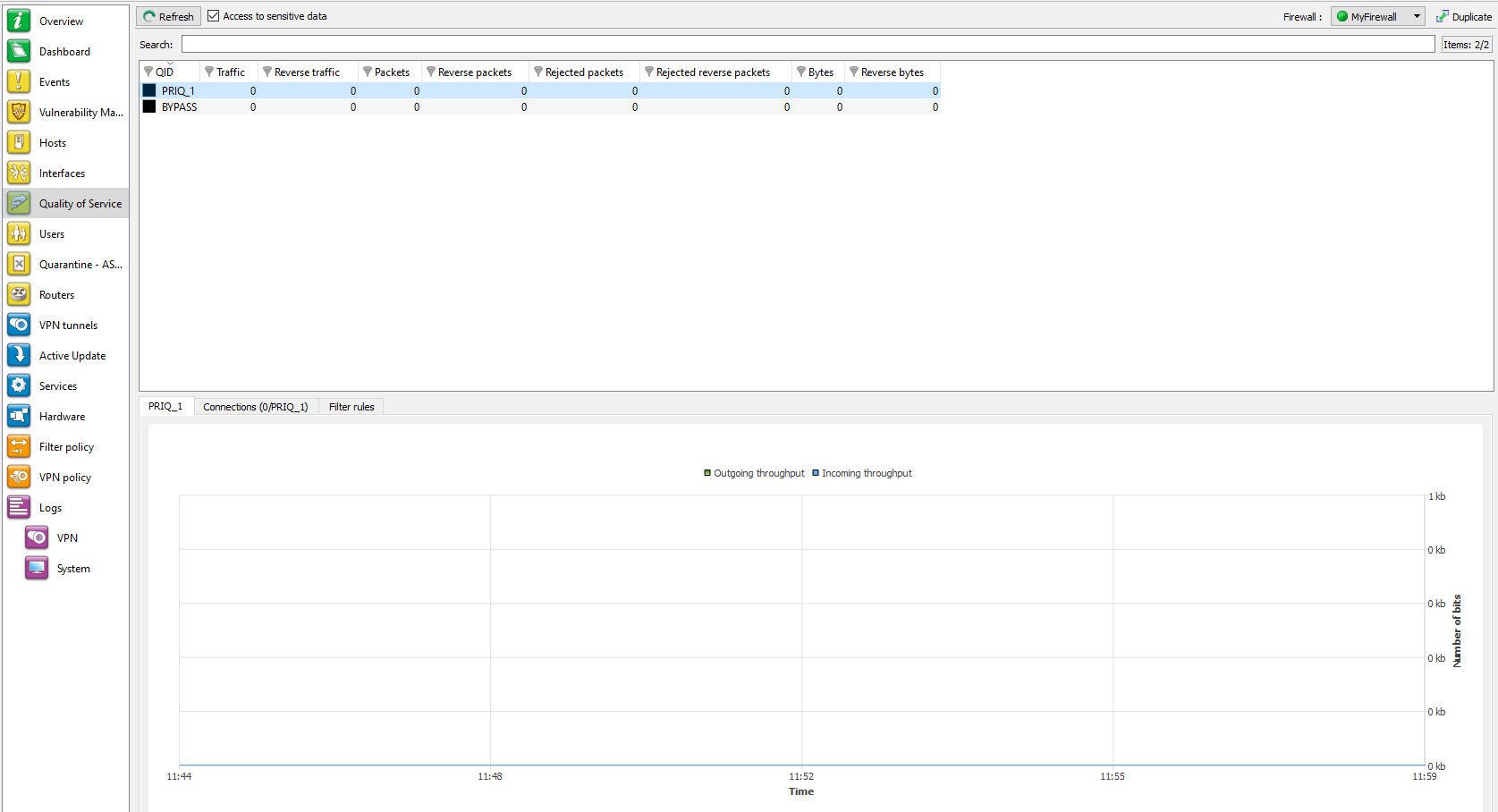Quality of service (QoS)
REMARKS
- Quality of Service, which has a high level of abstraction, refers to the ability to provide a network service according to parameters defined in a Service Level Agreement (SLA). The “quality” of the service is therefore gauged by its availability, latency rate, fluctuations, throughput and rate of lost packets.
- Where network resources are concerned, the “Quality of service” refers to a network element’s ability to provide traffic prioritization services and bandwidth and latency time control.

Figure 48: QoS
This window comprises 2 views:
- A table view
- A graph view
The following data is displayed when you click on the Quality of Service menu:
|
QID |
Name of the policy defined for accepting or rejecting packets. |
|
Throughput |
Indicates in real time the incoming throughput that the QID manages. |
|
Reverse traffic |
Indicates in real time the outgoing throughput that the QID manages |
|
Packets |
Number of incoming packets in real time over a defined period. |
|
Reverse packets |
Number of outgoing packets in real time over a defined period |
|
Rejected packets |
Number of rejected incoming packets on the network. |
|
Rejected reverse packets |
Number of rejected outgoing packets. |
|
Bytes |
Value in Kbits or Mbits. |
|
Reverse bytes |
Value in Kbits or Mbits. |
“Diagram” view
This view shows the incoming and outgoing throughput associated with the different QIDs defined on the firewall’s QoS policy.
"Connections" view
The Connections tab displays connections in progress going through the selected queue. To find out what data is offered, please refer to the section of the Hosts module, section “Connections” view for the Hosts tab.
“Filter rules” view
This view allows listing the incoming filter rules that can be applied to the selected service class. Block rules are shown in red. Ignored rules are grayed out.